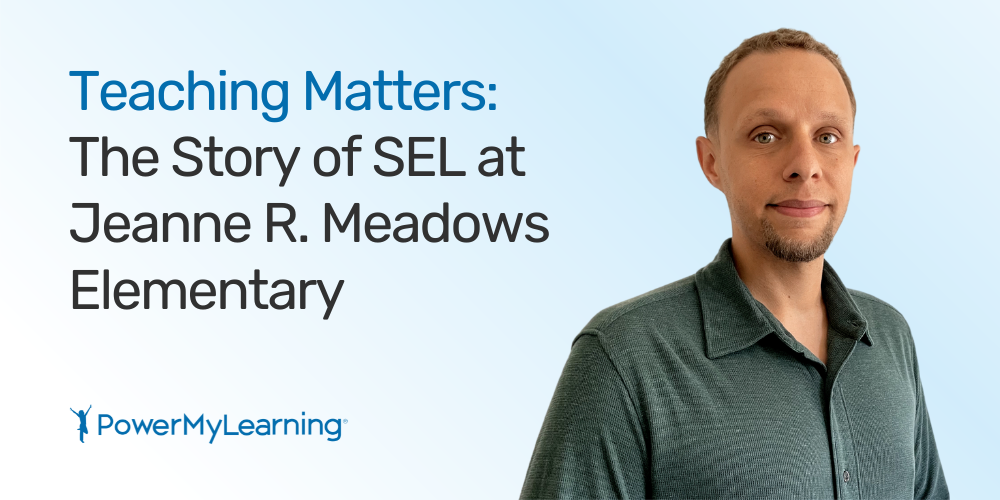A Q&A with the Visionaries at The Center for Education Market Dynamics
We are thrilled to honor Jeff Livingston, Beth Mejia, and Jay Bakhru at PowerMyLearning’s 2025 Innovative Learning Awards on May 6.
As the founders of The Center for Education Market Dynamics (CEMD), these three leaders are helping shape the future of education by equipping schools with the insights and data they need to improve student success. CEMD works with district leaders and state education agencies to gather and disseminate information on which instructional materials have been selected across the country, guiding leaders to make important decisions about curriculum, teacher training, and classroom practices, especially on behalf of underserved students. Although the Center for Education Market Dynamics gathers data on materials for several discipline areas (e.g. ELA, Science), the past 18 months have focused on math and providing guidance for upcoming adoptions in several key states.
We recently caught up with Jeff, Beth, and Jay to get their expert take on the future of education, the biggest hurdles facing schools today, and the game-changing strategies that are driving real, equitable results for students.
1. What inspires you to do this work and what keeps you motivated?
We’re driven by a core belief that access to better data and clearer insights can help education leaders make more equitable decisions—especially for students and communities that have too often been left behind.
Our work sits at the intersection of research, policy, and practice, and what keeps us going is the understanding that this isn’t just about data for its own sake. It’s about making the complex education marketplace more transparent so that decision-makers can act with clarity and purpose.
We’re motivated by the progress we’ve seen—district leaders using CEMD insights to make smarter curriculum choices, ask harder questions, and push for stronger alignment between what’s taught and what students truly need.
2. Looking ahead, what do you believe is the most significant challenge district leaders will face in improving math outcomes over the next five years, and what steps can they take now to address it?
We believe the most significant challenge will be building coherence in a moment of disruption. Districts are navigating a volatile mix: shifting political pressures, deepening workforce shortages, and the rapid emergence of new technologies like AI—all while trying to ensure equitable math outcomes for students.
The risk is fragmentation: different departments pulling in different directions, well-intentioned initiatives layered on top of each other without clear alignment.
To address this, district leaders need to center math as a system—not a subject. That means aligning curriculum, instruction, and professional learning into a single strategic effort, supported by real-time data and shared goals. The good news is we’ve seen this work. When leaders prioritize coherence, the impact on student learning is both measurable and sustainable.
3. With equity at the heart of both our organizations' missions, what strategies do you recommend to help districts ensure their curriculum decisions effectively support teachers, students, and families—particularly multilingual learners (MLLs)—in historically marginalized communities?
Systems don’t default to equity. If equity isn’t intentionally built in, monitored, supported, and corrected for, then inequity becomes the norm. That’s especially true when it comes to curriculum decisions. That means instructional leaders must consistently ask hard questions at every step of the curriculum decision-making process: Who was this curriculum designed for? Whose voices shaped it? How adaptable is it to the linguistic and cultural diversity of our classrooms?
For multilingual learners, the stakes are especially high—materials that don’t account for their language development needs can reinforce gaps rather than close them.
We recommend districts build adoption teams that reflect the communities they serve, use evaluation rubrics that prioritize linguistic access and cultural relevance, and create feedback loops with educators and families. But strategy alone isn’t enough—districts must also invest in the professional learning and systems infrastructure that ensure equity isn’t just in the materials, but in how those materials come to life in the classroom.
4. Among the districts that are achieving strong, equitable academic outcomes, what broader strategies (beyond curriculum selection) are proving most effective in closing math achievement gaps?
We’ve seen that the districts making real progress are the ones thinking systemically. They’re not just picking better materials—they’re building ecosystems of support around those materials. That means ongoing professional learning, clear instructional vision, data transparency, and a focus on continuous improvement.
One especially effective strategy is investing in instructional leadership at the school level. When principals and coaches are fluent in both the curriculum and the broader goals of equity, they become powerful drivers of student outcomes. It’s about making sure the right work is happening in the right rooms, with the right supports.
5. CEMD works closely with district leaders and state education agencies. How is new and upcoming math legislation shifting district priorities in areas like curriculum, professional learning, and intervention strategies? What steps should district leaders take now to ensure these changes improve student outcomes?
Recent math legislation is doing something both powerful and delicate: it defines what quality looks like, provides structured support for teachers to align their practice with that definition, and introduces accountability mechanisms to ensure systems actually deliver. The legislation itself isn’t just policy—it’s a theory of change. And how districts choose to relate to it will determine whether that theory works in practice.
Districts can experience these new mandates as either an opportunity or a burden. When leaders approach them as a chance to improve coherence, clarify expectations, and deepen instructional support, we see the potential for real transformation. But if the policies are perceived as just another compliance exercise—especially without meaningful support from the state—the momentum stalls.
What ultimately makes the difference is not just what the legislation says, but how state agencies and districts engage each other in the process. The systems that will thrive are the ones that see implementation as shared work and treat the definition of quality not as a ceiling, but as a floor they intend to rise above.
6. PowerMyLearning’s Family Playlists are an evidence-based math practice tool that leverages the power of play to strengthen math discourse, mindsets, and proficiency. In your view, how can tools like Family Playlists help district leaders foster a positive math culture that engages families and improves outcomes for historically underserved communities?
We believe math culture is one of the most under-discussed, yet critical, elements of student success. For too many students—and their families—math feels like a gatekeeper, not a gateway. Tools like Family Playlists offer a powerful antidote: they make math social, joyful, and relational.
When families are invited into learning through play, it sends a message that math is for everyone. That’s especially important in communities where generational experiences with school may have been exclusionary or alienating.
District leaders should embrace tools that help families feel seen and capable. That’s not just good engagement—it’s good pedagogy.
++++++++++++++++++++++++++++
About the Honorees
Jeff Livingston is a founding partner of EdSolutions and CEMD. With over a decade of leadership at McGraw-Hill Education, Jeff has played a pivotal role in advancing education policy, strategic alliances, and instructional innovation. He is passionate about partnering with mission-based organizations to create equitable opportunities for underserved students.
Beth Mejia is a founding partner of EdSolutions and CEMD, where she leads product strategy and customer experience. With three decades of experience in educational publishing and leadership roles at Macmillan, Pearson, and McGraw-Hill, Beth is dedicated to ensuring high-quality educational products reach historically underserved students.
Jay Bakhru is a founding partner of EdSolutions and CEMD and leads initiatives at the intersection of education markets, innovation, and social impact. With experience spanning Deloitte Consulting, Citigroup, and Educational Testing Service, Jay combines his business acumen with a passion for improving educational outcomes.



